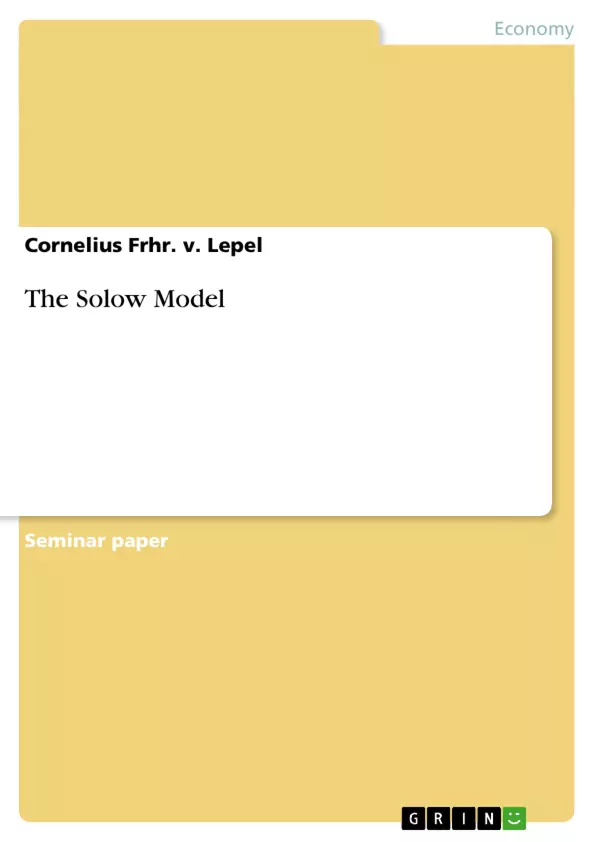This paper briefly examines the concept of economic growth and focuses on one of its most important theories: The Solow Growth Model. It starts of with a short insight to the importance of economic growth and its historical development and then moves on to the theoretical aspects and implications of the model itself.
It can well be argued that the Solow Model is one of the most influential works regarding modern growth theory. Also it does not account for every factor today believed to have influence on economic development it basic principles are of empirical relevance and can be observed in the real economic world. Economists following Robert Solow have added to the model as well as criticised it, thereby giving much material for academic discussion and thinking. However this article will stick with the basic theory proposed by Solow himself and try to lay out the way it depicts and explains the process of economic growth. In order to give Solow’s theories a place in the development of economic thinking, there is a short overview on his predecessors in the subject. Section 2 is dedicated to the latter purpose, while section 3 goes into the detailed examination of Solow’s work.
Inhaltsverzeichnis (Table of Contents)
- Introduction
- Background
- Economic Growth
- Relevance of Economic Growth
- Historical Overview
- Models
- Robert M. Solow
- Economic Growth
- The Solow Model
- Background
- Assumptions
- Dynamics
- Implications
- Conclusion
Zielsetzung und Themenschwerpunkte (Objectives and Key Themes)
This paper examines the concept of economic growth, focusing on the Solow Growth Model. It delves into the historical development of economic growth theory and analyzes the model's theoretical aspects and practical implications.
- Relevance of economic growth for human welfare and national prosperity
- Historical overview of economic growth theories
- The Solow Growth Model and its assumptions
- Dynamics of economic growth as described by the Solow Model
- Implications of the Solow Model for economic policy
Zusammenfassung der Kapitel (Chapter Summaries)
- Introduction: This chapter introduces the topic of economic growth and highlights the importance of the Solow Growth Model in understanding economic development.
- Background: This chapter provides a historical overview of economic growth theory, starting with mercantilist ideas and moving through the contributions of key economists such as Adam Smith, David Ricardo, Thomas Malthus, and Joseph Schumpeter. It emphasizes the importance of capital accumulation and technological progress in driving economic growth.
- The Solow Model: This chapter dives into the core of the Solow Growth Model, explaining its assumptions, dynamics, and implications for economic growth. It explores how the model describes the relationship between capital accumulation, labor growth, and technological progress in driving economic development.
Schlüsselwörter (Keywords)
This paper focuses on key themes and concepts related to economic growth, including: economic growth theory, the Solow Growth Model, capital accumulation, labor growth, technological progress, and the impact of these factors on national prosperity and human welfare.
- Citar trabajo
- Cornelius Frhr. v. Lepel (Autor), 2006, The Solow Model, Múnich, GRIN Verlag, https://www.grin.com/document/78332



